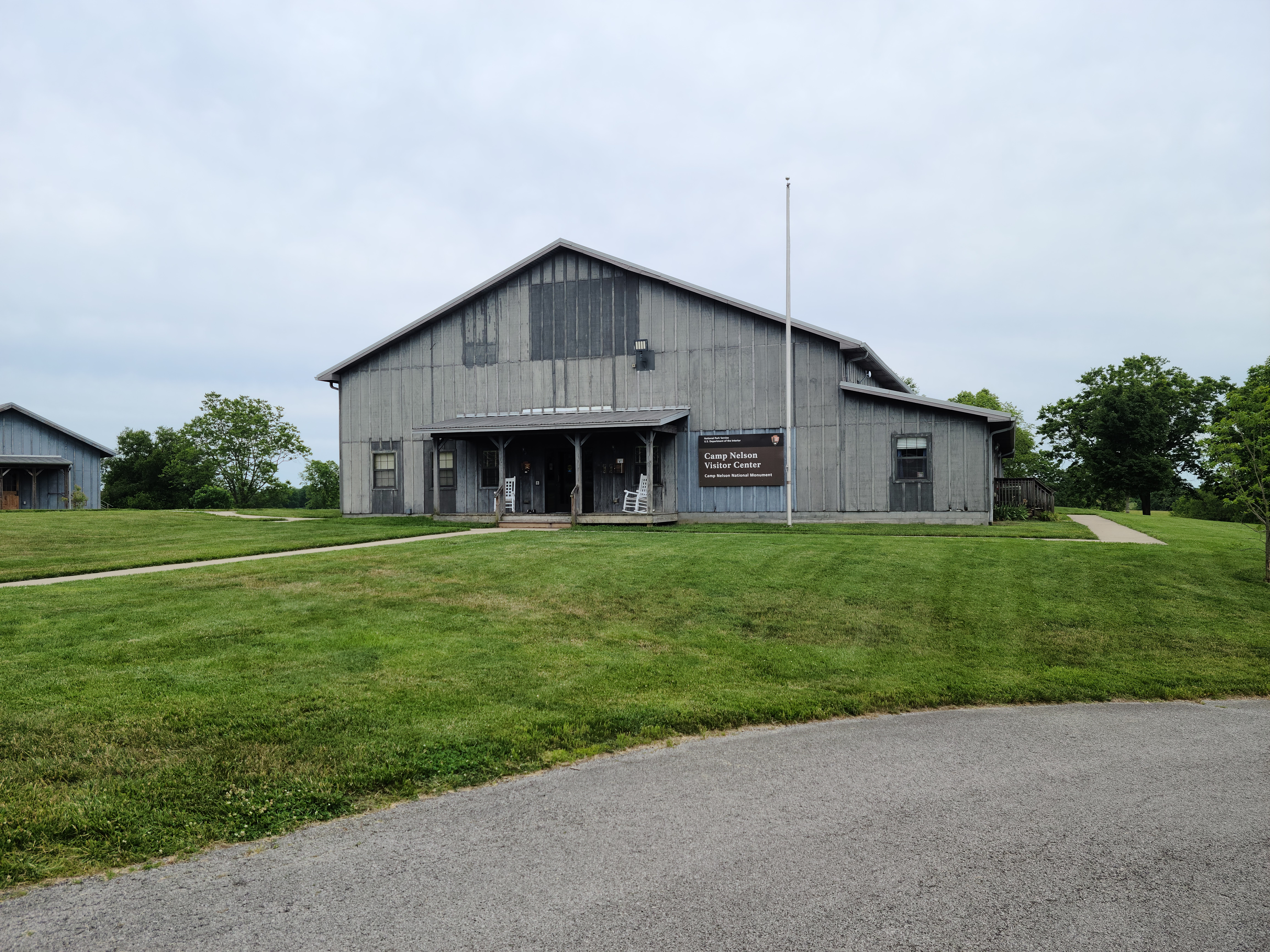by Bryan & Heather
In the heart of the Kentucky bluegrass just south of Lexington lies Camp Nelson, a newly-federalized National Monument that has lived as a county-managed historical site for the past two decades. Like so many other picturesque sites related to the American Civil War, Camp Nelson is surrounded by rolling fields, reconstructed earthworks and the occasional monument. Yet unlike all those other sites, those fortifications were never manned against the enemy, nor do those monuments commemorate a battle’s fallen. So how does one interpret the history of the American Civil War without the presence of the kind of combative military history that has become such a touchstone of the public’s engagement with those events?
![]() At Camp Nelson, that answer is threefold. The first, and perhaps most obvious, avenue of interpretation is to make as many connections to classic Civil War military history as you can. Here’s where the role of the camp as a regional logistics hub for numerous campaigns–including Burnside’s advance against Knoxville and Sherman’s advance against Atlanta–comes into play, providing a surprisingly fruitful array of the kinds of lesser-known but absolutely crucial history of how armies work in their rear areas. Shorn of the necessity of detailing grand strategy and tactical maneuvers, Camp Nelson can discuss the necessities of pack animal care, material storage and transportation, and even the heroic efforts to pump water hundreds of feet up the Kentucky River embankment to supply the camp. Outside the museum, the park’s beautiful four-plus miles of walking trails include novel explanations of fortification typology and location (each fort includes a different colored flag to help visitors find the others and visualize the defense of the landscape) that the larger battlefields simply don’t have time or space to offer.
At Camp Nelson, that answer is threefold. The first, and perhaps most obvious, avenue of interpretation is to make as many connections to classic Civil War military history as you can. Here’s where the role of the camp as a regional logistics hub for numerous campaigns–including Burnside’s advance against Knoxville and Sherman’s advance against Atlanta–comes into play, providing a surprisingly fruitful array of the kinds of lesser-known but absolutely crucial history of how armies work in their rear areas. Shorn of the necessity of detailing grand strategy and tactical maneuvers, Camp Nelson can discuss the necessities of pack animal care, material storage and transportation, and even the heroic efforts to pump water hundreds of feet up the Kentucky River embankment to supply the camp. Outside the museum, the park’s beautiful four-plus miles of walking trails include novel explanations of fortification typology and location (each fort includes a different colored flag to help visitors find the others and visualize the defense of the landscape) that the larger battlefields simply don’t have time or space to offer.
Moving past explicit military history, however, brings you to Camp Nelson’s second and most important interpretive theme: its role as a refugee camp for enslaved persons fleeing servitude in Kentucky and the recruitment of United States Colored Troop units. As a slave state that remained in the Union, Kentucky viewed the switch to more abolitionist war goals in the later half of the war with deep suspicion, and the personnel charged with the organization of Camp Nelson struggled to reconcile the trends of national policy with local realities. The resulting expulsion and subsequent death of hundreds of refugees in the winter of 1864 led directly to the act of Congress freeing the families of any men who joined the USCT, regardless of their place of residence. These events are the biggest reason for Camp Nelson’s new life as a Federal site, and as the new National Park Service program comes into its own, I expect that a fuller presentation of this pivotal moment in the war to end American chattel slavery will increasingly take center stage–as well it should.
Camp Nelson’s third and final avenue of interpretation, while closely related to previous two, is unique in that it focuses less on the history of the site than how we construct that history. The work of Dr. W. Stephen McBride, who has headed excavations at the site for decades, has yielded a wonderful exhibit of archaeological methodology and discovery that conducts visitors through the process of reconstructing the lives of those, like black refugees, whom our written sources only indirectly mention–if they mention them at all. I personally think that more works of public and popular history should take this approach, not just relating a historical narrative but explaining the nature of the sources from which it stems.
While for the time being it remains a park striving to find the right balance between the myriad histories it can tell (especially hard when saddled with the baggage that comes with the region’s strong Lost Cause traditions), Camp Nelson is well worth the visit if you’re ever passing through Kentucky. It is a testament to how much else can be discussed at historical sites when you move beyond the classic history of battles and great men.
